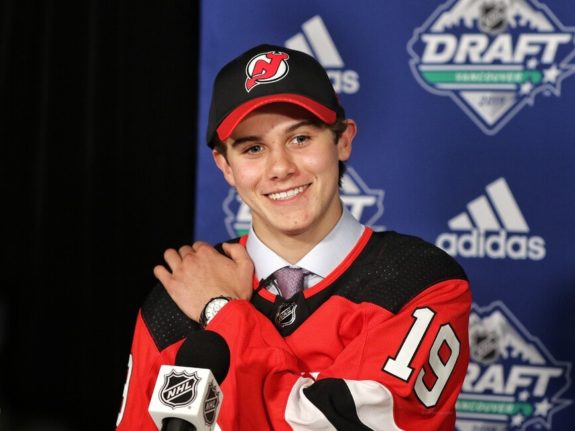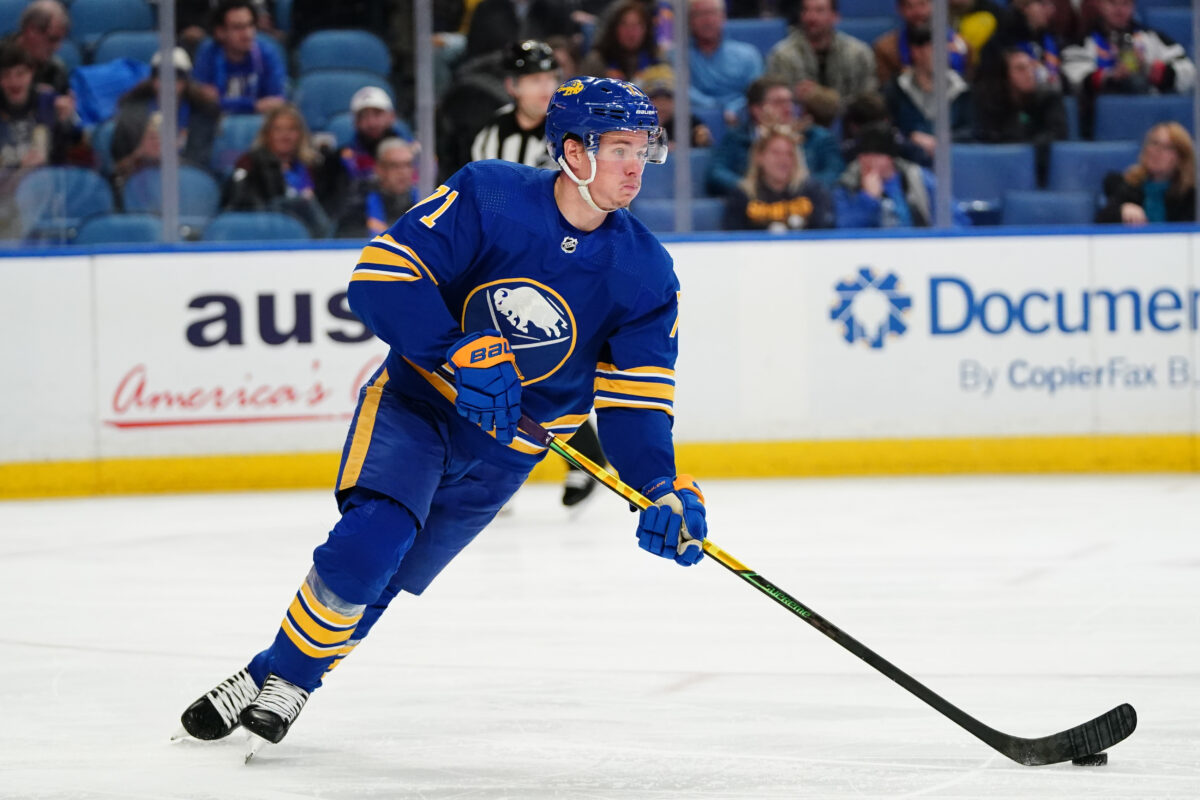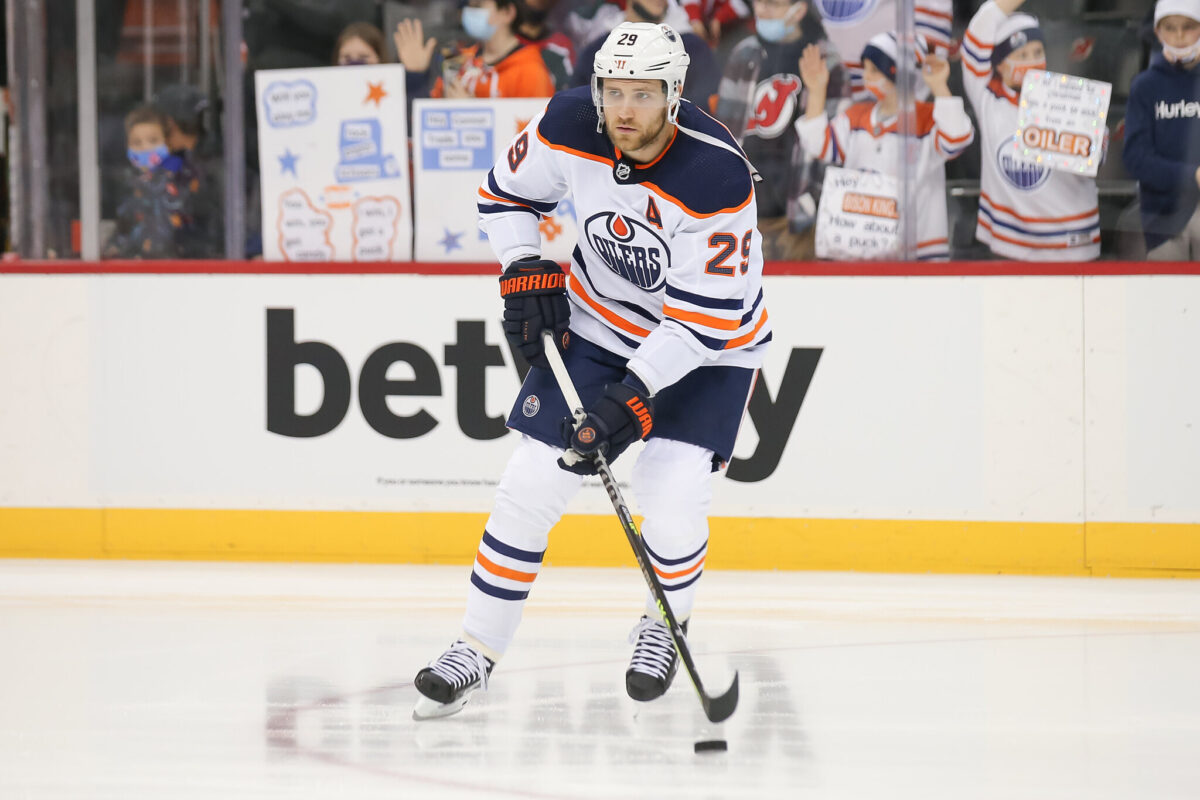With a rock-solid core of Tage Thompson, Rasmus Dahlin, Dylan Cozens, and Owen Power, the Buffalo Sabres have set themselves up for a plethora of future success. It seems as though they are ready to take the next step and become playoff contenders, if not this year certainly for years ahead. But how does their rebuild stack up against the likes of the Tampa Bay Lightning and the New Jersey Devils?
Drafting Early (and Often)
As with most successful teams, the Sabres’ rebuild success has come from the draft. Acquiring draft capital and drafting early and often has brought almost all recent Cup winners (with the exception of the Vegas Golden Knights) their victories.
Tampa Bay Lightning
In 2007-08, the Lightning finished 30th in the league and won the first overall pick, selecting their franchise cornerstone and current captain Steven Stamkos. The following year, they held the second overall pick, selecting their number one defenseman, Victor Hedman. Flash forward to 2012, when they traded for the 19th overall pick and selected Andrei Vasilevskiy – arguably one of the greatest playoff goaltenders of all time despite only being 28 years old.
While these are names that have directly led to the Lightning’s success, they also selected several names in the first round that have not helped them win a Cup. Brett Connolly was selected sixth overall in 2010. Slater Koekkoek was selected 10th overall in 2012, the same year they selected Vasilevskiy. In the following year, Tampa Bay selected Jonathan Drouin third overall, though he was traded long before the Lightning found their continued playoff success.
New Jersey Devils
The Devils are likely a better frame of reference for what the Sabres are doing with their rebuild, in that they found more success in their early draft picks than the Lightning did, which seems to be the route that the Sabres are taking. Dating back to the 2015 Draft, the Devils have picked in the top-10 in six out of the last nine drafts, while this past draft was the first time since 2013 the Sabres have not drafted in that position.
In that span, the Devils selected Jack Hughes and Nico Hischier at first overall, Simon Nemec at second, Luke Hughes at fourth, Pavel Zacha at sixth, and Alexander Holtz at seventh. All of these players, with the exception of Zacha (who they traded for a current roster player), are conceivably part of – or will be a part of – their core moving forwards.

Later in the first rounds, the Devils drafted Michael McLeod (12th, 2016), Ty Smith (17th, 2018), Dawson Mercer (18th, 2020), and Shakir Mukhamadullin (20th, 2020). McLeod and Mercer are currently on the Devils’ roster, and Smith and Mukhamadullin were traded for current roster pieces in John Marino and Timo Meier respectively.
How the Sabres Stack Up
All of this is to say that the seemingly correct way of rebuilding a team is by drafting early and often. Of course, teams aren’t always going to hit on their early draft picks, much like the Lightning didn’t do with Connolly and Koekkoek, and the Devils with Smith and Zacha. However, with enough draft capital in the first – and especially the early first – teams are bound to hit on the majority of their selections.
This applies very well to the Sabres, who, as previously mentioned, selected in the top ten in every year since 2013, with the exception of this year’s draft. From 2013 to 2016, their selections were Rasmus Ristolainen, Sam Reinhart, Jack Eichel, and Alex Nylander. With the exception of Nylander, they were able to trade these players for assets which are still useful to them today, and each of the trades involved first-round picks.

Much like the Devils, the Sabres drafted first overall twice, selecting both of their premier defensemen in Rasmus Dahlin and Owen Power. Each of their other first-round selections since 2016 have been successful players for the Sabres. Middlestadt in 2017, Cozens in 2019, and Quinn in 2020 are all already solid contributors for the team. Savoie, Kulich, Ostlund, Rosen, and Benson all look like they will be, too.
Hitting Late in the Draft
Another commonality with all of these teams is their ability to hit on mid-to-late draft picks on top of drafting premier talents early. The Lightning selected Nikita Kucherov, Brayden Point, and Ondrej Palat at 58th, 79th, and 208th overall respectively, with each player being imperative to the team’s success during their Stanley Cup runs. Depth players such as Alex Killorn, Anthony Cirelli, Ross Colton, and Mathieu Joseph, players who didn’t necessarily headline the scoresheets but were important in providing depth scoring for Tampa Bay, were selected well past the first round as well.
Related: Buffalo Sabres’ Best Draft Steals
With the Devils, it’s much of the same. Jesper Bratt is one of their leading scorers and was found in the sixth round. Nathan Bastian, Miles Wood, and Yegor Sharangovich are all second-round or later picks who contributed (or still contribute, in Bastian’s case) to the team over the years.
As far as the Sabres go, they have several players selected in the second round or later who are currently contributing to the team. JJ Peterka and Mattias Samuelsson were both selected in the fourth round, while Jacob Bryson was selected at 99th overall, and Victor Olofsson was picked at 181st. Of course, Olofsson is the real steal here, being a three-time 20-goal scorer at the NHL level in just five years, but Peterka and Samuelsson already seem like pieces that the Sabres will rely on for years to come to provide depth scoring and quality defense.

It’s entirely possible that more later-round picks by the Sabres are going to hit, too. Lukas Rousek, their sixth-round pick in 2019 had a fantastic year in Rochester, was their All-Star selection, and earned himself an NHL stint in which he posted a goal and an assist in two games. Nikita Novikov, their sixth-rounder in 2021, got extended time in the Kontinental Hockey League (KHL) this season and looks like he might be a viable bottom-four defenseman moving forward. Ukko Pekka-Luukonen was drafted in the second round and can be a viable backup to Devon Levi. The list goes on and on with later-round talents that the Sabres appear to be successfully developing into NHL-ready players.
Team-Friendly Contracts
This is really what separates the perennial winners from the flash-in-the-pan hockey teams, in my opinion. With a star player on a team-friendly contract, teams are able to build a lineup with both more depth and more firepower than a team with an albatross contract (no matter how good the player). As good as the Toronto Maple Leafs’ “Core Four” are, it has prevented them from being able to sustain playoff success because they are unable to afford depth scoring.
A prime example of players taking less money to win at a sustained level is the Boston Bruins. Brad Marchand outwardly spoke about how he took a lower-value contract in order to sustain success with the team. It’s reasonable to assume that Nathan MacKinnon did the same for the Avalanche before his new contract was signed.
There is an argument today for the best-value contract in the league, and to no surprise, they’re all on teams that either have been contenders or are just beginning to open their Cup window. Leon Draisaitl, for example, makes just $8.5 million a year despite continually being one of the league’s top-five scorers. Jack Hughes is signed at $8 million per year until the 2029-30 season, allowing the Devils to load up with high-end firepower and depth.

And then, of course, there is Tage Thompson, who signed a seven-year deal worth $1 short of $50 million total last summer. Thompson is already one of the league’s top goal scorers and is just entering his age-25 season. Having this ultra-team-friendly deal for their franchise cornerstone will allow the Sabres to acquire and extend premier talent up-and-down their lineup. If Dahlin takes a similarly team-oriented deal, the sky truly is the limit for the Sabres.
Successful Trades
Finally, there’s the matter of successfully trading assets for long-term players, a pattern which every Stanley Cup contender adheres to. The Lightning traded for Mikhail Sergachev, Erik Cernak, Nick Paul, and Brandon Hagel; the first three are signed to long-term deals, while Hagel was one of their top producers this season and is still a restricted free agent (RFA) after his current contract expires. The Devils acquired Meier and Jonas Siegenthaler via trade, two pieces that have been and will be important to their future.
This is truly where the Sabres set themselves apart from the competition. Whereas they have drafted successfully over the years and have built much of their core through the draft, they have acquired a ton of important players from trades. Their entire top line – Thompson, Jeff Skinner, and Alex Tuch – were all acquired via trades. Looking down their lineup, young, promising players in Peyton Krebs and Devon Levi were also traded to the Sabres. In fact, Levi is looking to be their goalie of the future.
Parting Thoughts
In comparison to other, successful rebuilds, like the Lightning and the Devils, the Sabres’ rebuild stacks up quite well. As both teams have done, the Sabres drafted early in the draft, and more often than both at that. Additionally, they’ve hit with late-round draft picks that have proven to be more-than-adequate players for the team now. Their star forward is signed to an extraordinarily team-friendly contract, and they’ve hit on many, many trades.
For the Sabres, this is the beginning of what should be a very, very long stretch of sustained success. Be excited.